
As more and more people use mobile apps, developers find various ways to monetize Android and iOS apps and make more money. Mobile apps also offer much potential to users and developers.
As per Allied market research reports, the mobile app market is expected to increase to $777.4 billion by 2032, valued at 208.5 billion in 2022.
This data clearly shows that there has been an increasing surge in mobile app users, which gives a sudden rise in the number of mobile apps.
Moreover, customers spend more than 90% of their time on their mobile apps; there comes the opportunity for you to earn some money out of it.
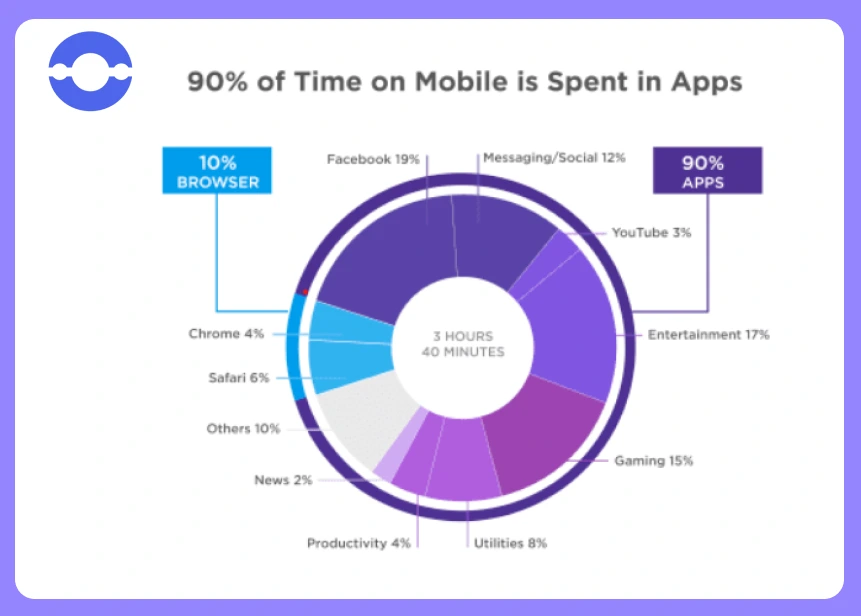
So, how do mobile app developers make money out of apps when 9 out of 10 apps are available for free download?
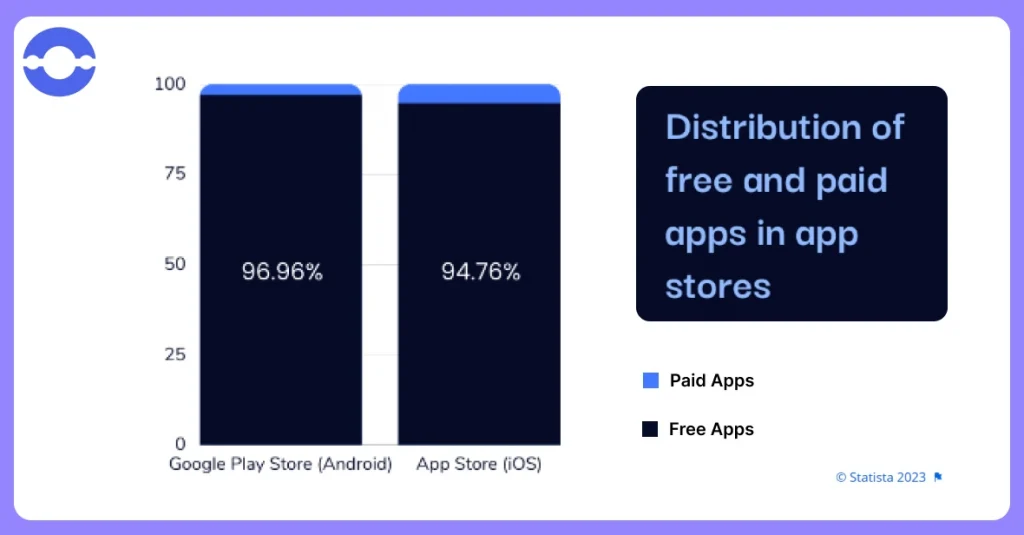
It is by employing various Android and iOS app monetization strategies.
What is monetization of mobile apps?
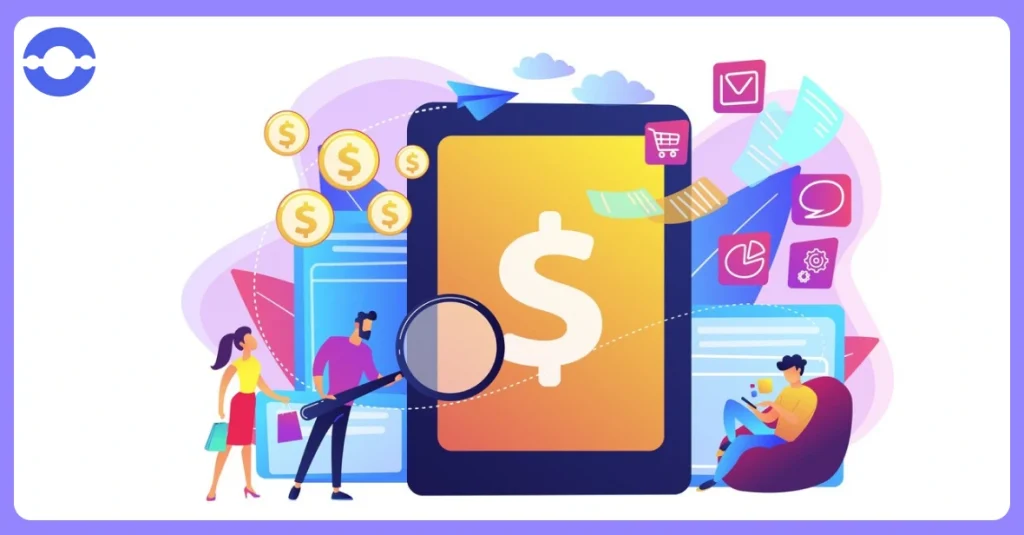
Mobile app monetization is the process by which mobile app developers make some money and generate revenue.
Neil Patel says that when you spend too much time and resources building a great mobile app idea, you want something in return.
That’s why you need a proper mobile app monetization strategy to turn your app idea into a profitable one.
Mobile app development companies can monetize their mobile apps by using various strategies such as in-app purchases, in-app advertising, subscriptions, paid apps, freemium models, etc.
An app monetization strategy is a win-win for both the developer and the user. The user gets a good user experience while the developer can monetize android and ios app and generate a good amount of revenue.
Monetizing an app is significant because apps have become the primary medium of content consumption. This is where advertisers can come into the picture.
Deciding the best app monetization strategy completely depends on your target audience and your app vertical.
Because of an increasing number of free apps, users enjoy paying for a paid app, whether gaming or news.
Why is the monetization of mobile apps important these days?
There has been hype in the number of free apps on app stores.
Research studies from Statista say that around 97% of apps on Google Play Store are free. These numbers are slightly less in the app store.
As per the business of apps, In 2021, more than 100 billion apps were downloaded for the first time, and that is expected to reach 150 billion by 2025.
This provides an advantage to developers to give top priority to user acquisition to increase ad impressions and drive more ad revenue.
But if you want to grow your mobile app revenue, you need to adopt any one of the app monetization methods, which we’ll discuss below.
6 Ways to monetize Android and iOS apps in 2024
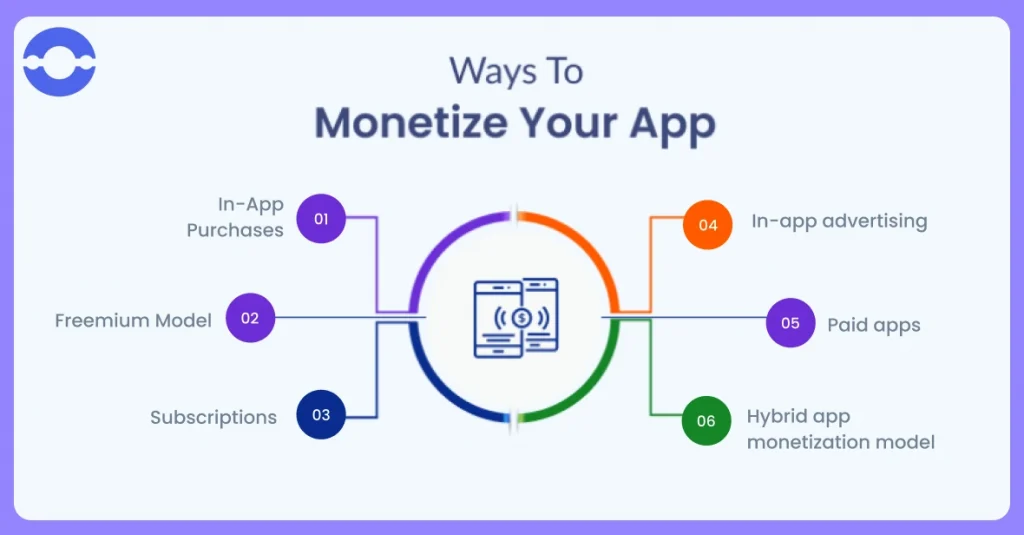
1. In-app purchases
In-app purchases are the most popular app monetization model for Android and iOS apps. It allow users to purchase something inside the app such as consumable, non-consumable, and subscriptions.
Various e-commerce and gaming apps use in-app purchases to monetize their mobile apps. It is a successful app monetization model because users feel comfortable purchasing items within an app once they download it.
Such an app monetization model acts as an interface between developers and users. Here, users need to pay money to access content or other functionalities within an app.
Studies from the app business suggest that around $380 billion is spent by users across the globe on in-app purchases.
Developers, on the other hand, enjoy a steady source of income.
With in-app purchases, users can unlock additional content and access premium features and services, such as gems, coins, tokens, subscriptions, etc. According to Forbes, apps having in-app purchases generate the highest revenue.
The popularity of such app monetization model is expected to skyrocket in the coming few years.
An example of a brand that uses in-app purchases to drive app revenue
A famous example of a brand leveraging the in-app purchases model is toolzhire, which provides a one-stop marketplace for buying and selling equipment rental services.
The app allows users to use the app for free and charges a transaction fee for completing a specific transaction within an app.
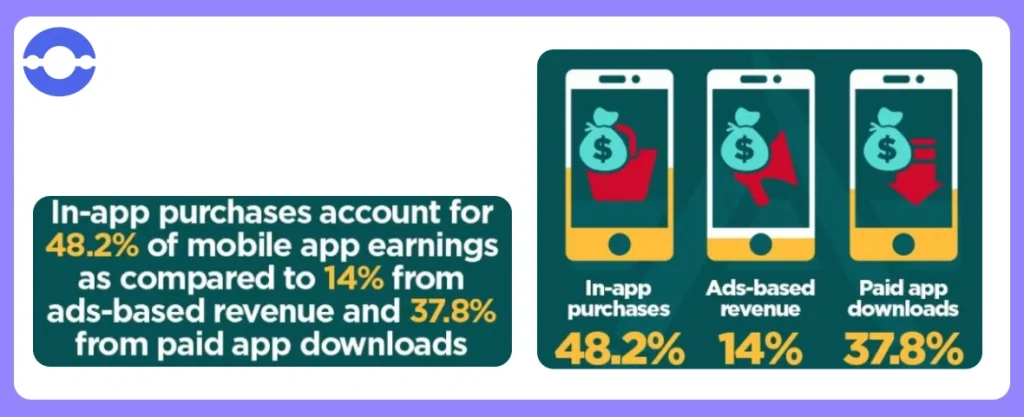
Before monetizing the app through in-app purchases, the company aimed to build a massive user base that accounts for demand and supply segments within the market.
Thus, they successfully generated huge revenue by attracting more users and converting them into paying customers.
Benefits of monetizing your Android and iOS app through in-app purchases
- It offers convenience to app users as they can purchase items within an app
- Such a monetization strategy proves to be an effective source of revenue for app developers, especially in the case of gaming apps.
- It provides a long-term engagement to users, and they intend to purchase an upgraded version of an app.
- It gives an option for users to try the app before they purchase.
2. Freemium model
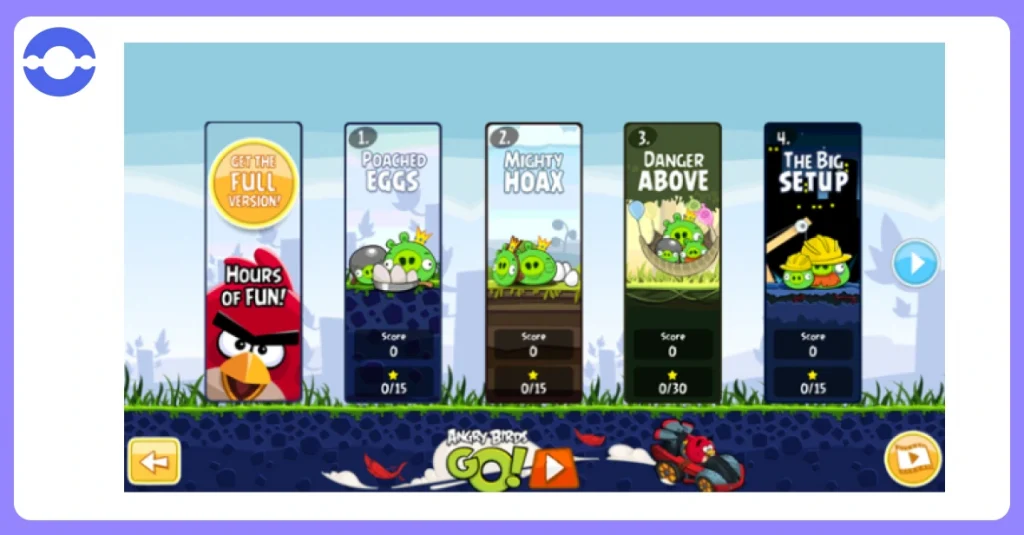
Under the Freemium monetization approach, users can download a free but handicapped application. It means that users get access to basic features for free, while they have to pay a price for unlocking additional features or benefits.
The most popular examples of the freemium Android and iOS monetization model are YouTube Premium and Spotify Premium.
Under such a model, both apps allow users to access basic services for free.
But they must upgrade their plan if they don’t want any ads on their feed. In the case of Spotify, users can buy subscriptions monthly or yearly and listen to Spotify music and podcasts ad-free.
If you expect users to switch to an upgraded version of an app, you have to provide a positive user experience, such as you can give free premium access to them for one month.
The advanced version offers extra features to users with no limits.
Let’s take another example of a freemium model for iOS and Android-
Zoom allows users to use the app for video conferencing for free.
At the same time, it sets a restriction on the duration of the conference and the number of participants.
If you want to do a small get-together, users must sign up for paid plans that offer extensive options, such as cloud storage for conference records, limiting up to 500 members, etc.
This way, they can know what they get after paying a price. Your free version should provide immense value to them so they will be engaged every time they land on your app.
Benefits of monetizing your Android and iOS app through the Freemium model
- This app monetization model retains the users as long as it does not have intrusive ads.
- As the app is free, users are attracted to leveraging basic features.
- You can get exposure to reach more audiences and let users download the app. With a larger audience, you can access more data and optimize your marketing campaigns accordingly.
3. Subscriptions
The subscription-based app monetization model continues to climb in 2024. Here, users download the mobile app for free. Still, they are required to pay membership fees on a weekly, quarterly, or annual basis.
It is the most common revenue-generating model for developers, and many companies such as Netflix, Tinder, Spotify, and Dropbox.
App developers prefer to adopt such a monetization strategy to get recurring sources of revenue. By offering subscriptions, app developers can retain customers.
As per App Annie (currently known as Data.ai), 79% of the revenue of the top non-gaming apps came from the subscription model, while on iOS, the revenue was 94%.
To enhance the user experience, you can offer different tiers of subscriptions, such as basic subscription, pro subscription, and premium subscription. Or you can even use different naming conventions such as silver, gold, platinum, etc.
Moreover, such an app monetization model offers long-term value to customers, and people will continue to subscribe to a service if they get some value out of it.
For instance, Netflix would not get more user support if they didn’t roll out new content on their platform. Thus, a subscription model works only if the app keeps innovating and improving.
An example of a brand that uses a subscription model to maintain recurring cashflow
Tinder, a dating app, uses subscription-based monetization model and offers multi-tier subscription services such as no subscription, Tinder Plus, and Tinder Gold.
No subscription allows users to download the Tinder app for free, but they have a certain restriction on likes and super likes.
Tinder Plus offers unlimited likes to the users, and they are not exposed to ads on their feeds. In addition, Tinder Gold gives you exclusive access to top-pick features.
Benefits of monetizing your Android and iOS app through Subscriptions
- Such a monetization model for iOS and Android apps provides additional value to the user, and if the content is of high value, they are more likely to stick to an app and continue to pay for it in the future.
- It provides a steady source of revenue for developers, and they can maintain a healthier cash flow.
- Automatic renewal of subscriptions increases the retention rate of customers.
- The subscription-based model offers users flexibility as they can choose the plan that fits their needs and budget.
4. In-app advertising
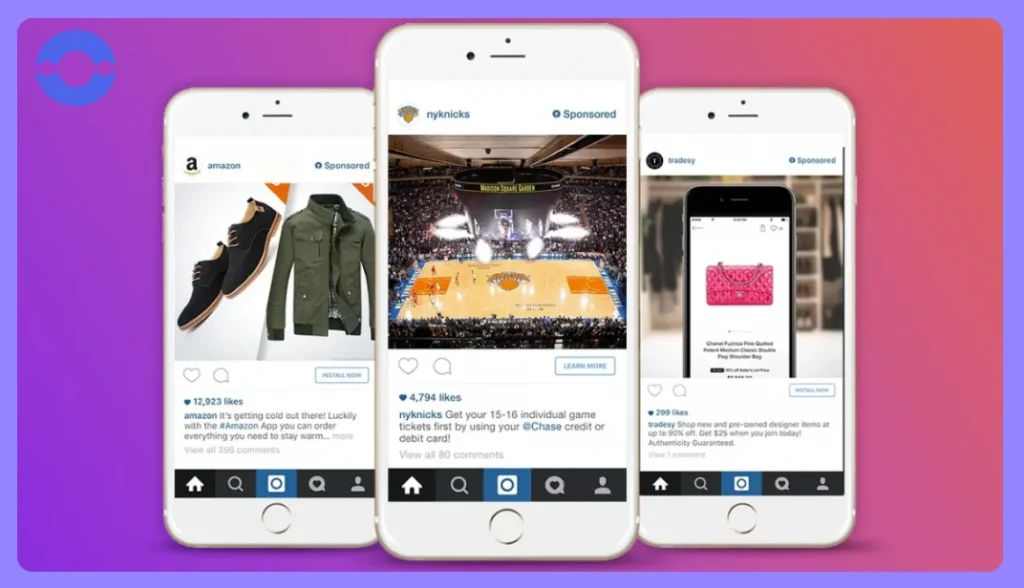
In-app advertising is one of the profitable ways to monetize Android and iOS apps. In this model, you will run ads inside the app to generate money.
Such an app monetization model is common in gaming, entertainment, social media, streaming, and entertainment apps.
You can leverage various ad formats, such as banner ads, interstitial ads, video ads, etc.
As per Grandview research, the market size of in-app ads was valued at 151.1 billion USD in 2022 and is expected to compound at a growth rate of 13.2% in 2030.
In-app ads are more effective because most mobile users spend time on mobile apps.
By running in-app ads, you can maximize your exposure and increase your chances of conversion. Also, as consumers are becoming more mobile-oriented, it is ideal for advertisers to adopt such a monetization strategy.
Each time users watch these ads, they are likely to perform certain actions, such as downloading the app, making a purchase, clicking on the ad, etc., and the app owners generate some revenue.
Thus, it is considered a profitable monetization strategy for Android and iOS apps.
Example of a brand that uses an in-app ads model to maintain recurring cashflow
If you use various social media apps such as Facebook, Twitter, and Pinterest, you might have encountered such ads, be it targeted or non-targeted.
Here, advertisers run such ads to promote their products and services in exchange for a certain fee paid to the platform. Such ads are known as in-app ads.
Benefits of monetizing your Android and iOS app through in-app advertising
- Such ads increase your user engagement and will likely stick with an app for longer. Thus, it helps businesses to get more sales.
- Integrating such ads on your app does not affect the user experience as it flows naturally on your app. Furthermore, running those ads on the web looks boring to smartphone users.
5. Paid apps
The paid app model is popularly known as the pay-per-download model, wherein app developers can earn a significant amount of revenue by charging a one-time download fee from users and allowing them to access the app.
A one-time registration fee for an app is decided by the app owner, keeping in mind various factors such as features of an app, app functionality, etc.
If you want to adopt this mobile app monetization strategy, your app needs a handful of compelling features and functionalities that let the user pay the price.
When it comes to paid apps, most iOS app users are likely to pay for them. Before adopting such a model, you must create an app that makes another person feel “WOW.” Also, it frees the buyer from such drab and boring ads.
Usually, big-name applications employ such monetization strategies as they hold a strong reputation in the market and have a consistent pipeline of getting clients. The cost of paid apps ranges between $0.99 – $999.99.
An example of brand that uses a paid app model to get direct revenue
Calendars 5 is a productivity app on the app store that follows a paid app monetization model.
Users need to pay a one-time purchase fee, which costs around $4.99, and the app positioned itself as the smart calendar and encouraged users to download and use it because it is way better than Apple’s default calendar.
Benefits of monetizing your Android and iOS app through paid app model
- Paid apps provide instant revenue to app developers as this strategy comes under direct app monetization. Thus, the return on investment is quicker as compared to other methods.
- People respect investing in paid apps as they expect that they will get valuable content out of it.
- You will get a cleaner app interface as the paid app’s feed is not flooded with ads anymore.
- People who have invested in paid apps are more likely to convert into engaged customers because they have committed monetary investments.
6. Hybrid app monetization model
Combining 2 or 3 app monetization strategies is popularly known as the hybrid model. Certain app developers employ a mix of in-app ads with in-app purchases to drive maximum revenue.
Example of an app that uses a Hybrid monetization strategy for Android and iOS apps
A gaming app uses a Hybrid monetization strategy: in-app purchases, freemium, and in-app advertising.
The app is available for free download, players can make purchases at advanced levels, and they have the option to access exclusive content and unlock additional tiers.
Benefits of monetizing your Android and iOS app through a hybrid model
- Developers can get revenue from diverse sources. So, you can make more money and reduce potential losses as you are not putting all your eggs in one basket.
- It allows you to identify which mobile app monetization strategy is responsible for primary revenue.
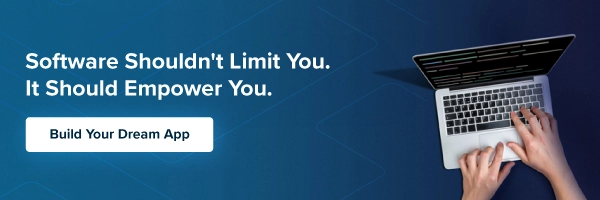
Best Mobile App Monetization Platforms
- MAX by AppLovin
- Unity Ads
- AdGate Media
- Chartboost
- IronSource
- InMobi
Which app monetization model is good for iOS and Android apps?
Then, there is no one-size-fits-all approach because it depends on various factors such as the category of the app, app goal, competitors, your target audience, what problem your app solves, etc.
There is no silver bullet; it all comes down to trial and error and seeing which works best for you. Later on, you can switch to other monetization strategies for mobile apps.
Here are some best practices for monetizing your mobile app so you can increase your app earnings-
- Always have different avenues for mobile app monetization. Focusing solely on a single app monetization model is never a good practice.
- Focus on increasing user retention rate by keeping a close eye on various factors such as navigation, user interface, user experience, and speed of an app.
- Use mobile app analytics and keep track of various KPIs such as installs, uninstalls, mobile app downloads, etc.
Wrapping up
Choosing from the above app monetization strategies can make a big difference if you want to retain your users and make your app more profitable. But it all boils down to user experience.
If you need to learn how to create and monetize an app, connect with our app development experts now and skyrocket your app engagement rate. Don’t mindlessly copy what others have done because your business requirements differ from others.
FAQs
1. Is it possible to monetize a free app?
Yes, mobile app developers can monetize free apps through various app monetization methods, such as a freemium business model, in-app advertising, a subscription model, and adding in-app purchases on your mobile app.
2. How do I analyze app monetization performance?
You can measure your app monetization performance by analyzing key performance indicators such as ad revenue, ad impressions, engagement rate, cost per click, cost per install, etc. After analyzing such metrics, you can fine-tune your monetization strategies.




